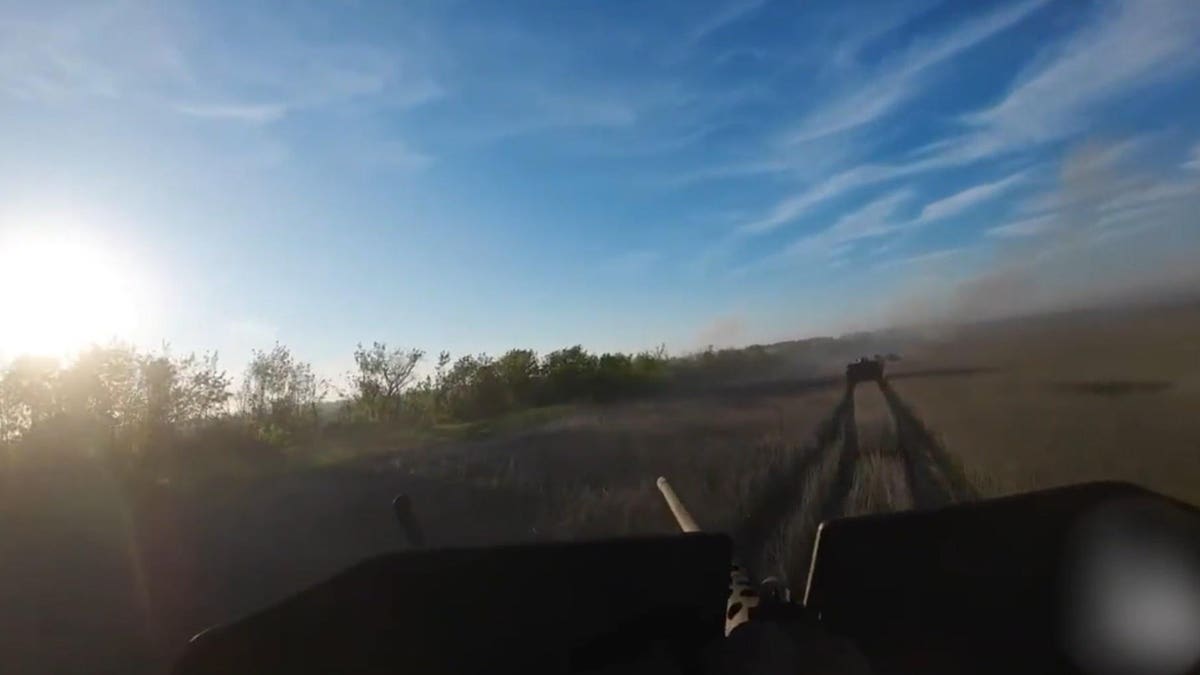It was all but inevitable that the Russian garrison in occupied Urozhaine would fall. Advancing in a pulse of rapid assaults since early June, a powerful division-size Ukrainian force—including all four Ukrainian marine corps brigades—had flanked Urozhaine, a tiny settlement with a few hundred structures arrayed along three parallel north-south roads in southern Ukraine’s Donetsk Oblast.
By advancing east and west of Urozhaine, a key Russian strongpoint in a chain of them leading south toward occupied Mariupol, 50 miles away on the Black Sea coast, the Ukrainians left the increasingly desperate Russian garrison—including elements of the 37th Motor Rifle Brigade—just one way out of Urozhaine: the T0518 road, threading south into neighboring Zavitne Bazhannya and Staromlynivka.
“The recapture of neighboring Urozhaine was only a matter of time,” the independent Conflict Intelligence Team wrote. And when the depleted Russian garrison fully or partially retreated on Saturday or Sunday, it did so on foot and in broad daylight along the open road and the fields abutting it.
Ukrainian drones watched from overhead. And Ukrainian artillery batteries took aim. What followed was a bloodbath.
A pair of drone videos that the Ukrainian defense ministry released on Sunday depicts scores of Russians hustling along the road. In the first video, a high-explosive artillery shell explodes, blowing soldiers to the ground. In the second video, the Ukrainian gunners use dual-purpose improved conventional munitions—cluster shells—to pepper the Russians’ escape route.
Russian forces have been using cluster munitions since the beginning of their wider war on Ukraine starting in February 2022. Ukrainian forces got Turkish cluster shells in late 2022 and, this spring, also got American-made M483A1 DPICM rounds for their NATO-style 155-millimeter howitzers.
A 103-pound M483A1 round pops open and expels its submunitions—each “capable of penetrating more than 2.5 inches of rolled homogeneous armor [or] incapacitating personnel,” according to a U.S. Army field manual—over an area that varies according to the round’s altitude at the moment of expulsion, but could be as wide as a football field.
The American DPICM rounds are dangerous to armored vehicles. Against unprotected infantry, they’re murder. It’s unclear how many Russians died in Urozhaine, and on the road out of Urozhaine. Scores? Hundreds? Either way, there’s a good chance that, as of today, the only live Russians in Urozhaine are prisoners of Ukraine.
Not everyone agrees this is the case. While some observers on both sides of the war believe the Ukrainians have liberated Urozhaine, the Institute for the Study of War in Washington, D.C. urged caution. “ISW has not observed confirmation that Russian forces have completely withdrawn from Urozhaine and Russian forces likely currently maintain positions in at least the southern part of the settlement,” the think tank wrote on Sunday.
Whether or not a few Russians still cling to positions in southern Urozhaine, the imminent outcome of the fight for the town isn’t in dispute. And the Russians already are trying to assign blame. “The Russian information space is seizing on Ukrainian gains in Urozhaine … to highlight poor Russian morale and command challenges in the area,” ISW noted.
One Russian blogger blamed the 37th Motor Rifle Brigade for failing to send tanks to support the infantry. Brigade troopers also were drunk, the blogger claimed. Another blogger faulted the Kremlin for removing the commander of the 58th Combined Arms Army, which oversees many of the brigades and regiments in southern Ukraine.
For the Russian dead in and around Urozhaine, it no longer matters who’s at fault. And the 37th MRB, the 58th CAA and the Kremlin soon will get another chance to prove they can hold a defensive position. Once the Ukrainians liberate Urozhaine—assuming they haven’t already done so—they inevitably will shift their sights to Zavitne Bazhannya and Staromlynivka. The next strongpoints on the road to Mariupol.
Read the full article here





